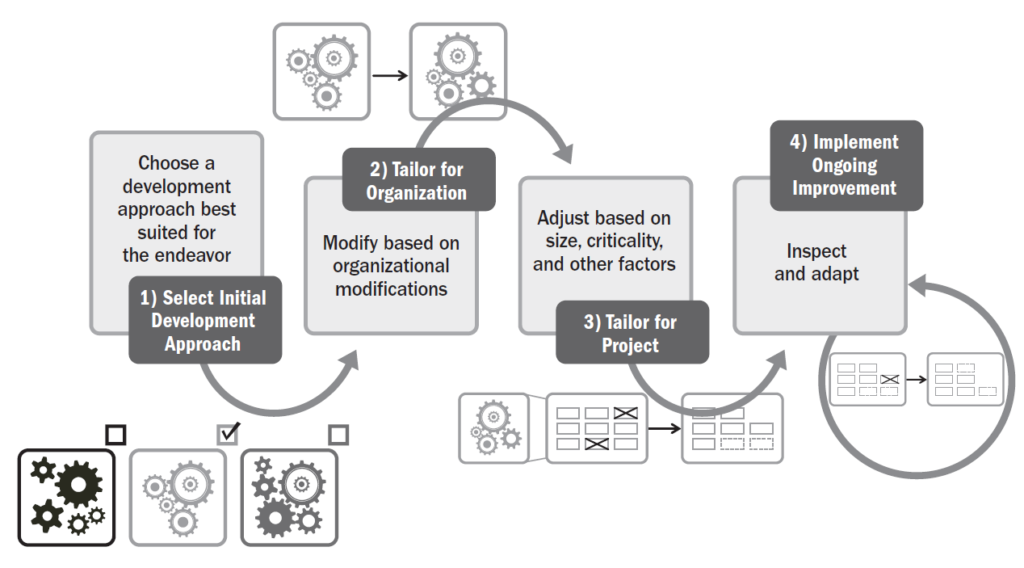Situational Leadership Models: Adapting Leadership to Fit the Moment
In the dynamic and ever-changing world of modern business, leadership is not a one-size-fits-all endeavor. A leader who thrives in one scenario may struggle in another if they fail to adapt their leadership style. This is where Situational Leadership Models come into play. These models offer leaders a practical framework for adjusting their behavior to fit the needs of the individuals they lead and the situations they face.
In this blog post, we will explore what situational leadership is, delve into the key models and theories, examine real-world applications, and understand how adopting this approach can elevate your leadership effectiveness.
What Is Situational Leadership?
Situational Leadership is a flexible, adaptive leadership approach that suggests no single leadership style is best. Instead, the most effective leaders adjust their style based on the task at hand, the competence and commitment of team members, and the environment in which they are working.
The concept was popularized by Dr. Paul Hersey and Ken Blanchard in the late 1960s with their groundbreaking model called the Hersey-Blanchard Situational Leadership Model. The model proposes that successful leadership depends on the leader’s ability to diagnose the needs of their team and adjust their leadership style accordingly.
The Core Principles of Situational Leadership
At the heart of situational leadership are a few key principles:
- Flexibility – Effective leaders must shift their leadership style depending on the situation.
- Diagnosis – Leaders must assess the readiness level (ability and willingness) of their team members.
- Partnering – Leaders should involve team members in decision-making when appropriate.
- Empowerment – Over time, leaders should aim to develop their team members to be more autonomous.
The Hersey-Blanchard Situational Leadership Model
The Hersey-Blanchard model is perhaps the most well-known situational leadership theory. It classifies leadership styles based on two dimensions:
- Task behavior (guidance provided by the leader)
- Relationship behavior (support provided by the leader)
Based on these dimensions, four leadership styles emerge:
1. Telling (S1) – High Task / Low Relationship
In this style, the leader gives specific instructions and closely supervises task completion. This is most effective when team members are inexperienced or lack competence.
2. Selling (S2) – High Task / High Relationship
The leader still provides direction but also explains decisions and seeks input to build commitment. This works well when team members have some competence but lack confidence or motivation.
3. Participating (S3) – Low Task / High Relationship
Here, the leader facilitates and encourages participation in decision-making. This style suits team members who have competence but may lack the confidence or motivation to act independently.
4. Delegating (S4) – Low Task / Low Relationship
In this style, the leader provides minimal direction or support. It works when team members are competent, confident, and motivated.
Development Levels of Team Members
Alongside leadership styles, Hersey and Blanchard identified four levels of follower readiness or development:
- D1 – Low competence, high commitment
- D2 – Some competence, low commitment
- D3 – High competence, variable commitment
- D4 – High competence, high commitment
Effective leadership happens when a leader’s style matches the team member’s development level. For instance:
- Match D1 with S1 (Telling)
- Match D2 with S2 (Selling)
- Match D3 with S3 (Participating)
- Match D4 with S4 (Delegating)
Other Situational Leadership Models
While Hersey and Blanchard’s model is the most cited, other frameworks offer valuable insights into situational leadership as well.
1. Goleman’s Six Leadership Styles
Daniel Goleman, known for his work on emotional intelligence, introduced six leadership styles that align with different situations:
- Coercive – Demands immediate compliance (good for crises)
- Authoritative – Mobilizes people toward a vision
- Affiliative – Creates harmony and builds emotional bonds
- Democratic – Forges consensus through participation
- Pacesetting – Sets high standards for performance
- Coaching – Develops people for the future
According to Goleman, the best leaders switch between styles depending on what the situation demands.
2. Fiedler’s Contingency Model
Fred Fiedler’s model focuses on matching a leader’s style with the right context. Unlike Hersey-Blanchard, Fiedler believed a leader’s style is fixed, and the environment should be modified to suit the leader. It uses three dimensions to assess a situation:
- Leader-member relations
- Task structure
- Position power
If the situation fits the leader’s style, effectiveness improves.
3. Path-Goal Theory
Developed by Robert House, this model suggests that leaders should clear the path to help followers achieve goals. It identifies four leadership styles:
- Directive
- Supportive
- Participative
- Achievement-oriented
Leaders assess the follower’s characteristics and the work environment, and then choose the appropriate style.
Real-World Applications of Situational Leadership
Situational leadership is used in:
1. Project Management
Project managers often work with cross-functional teams at varying levels of maturity. A new intern may need directive guidance, while a senior developer may perform best under a delegating style.
2. Healthcare
Doctors and nurses work in high-stress, unpredictable environments. Leaders must adapt rapidly, shifting from authoritative to supportive styles.
3. Military and Emergency Services
Situational leadership is essential in high-stakes, time-critical operations. Leaders must make quick decisions based on both the competence of their team and the severity of the situation.
4. Corporate Environments
In performance reviews, employee onboarding, or innovation initiatives, leaders benefit from choosing the right style at the right time to boost morale and productivity.
Benefits of Situational Leadership
1. Boosts Team Performance
Matching leadership style to development level results in better communication, clarity, and performance.
2. Improves Employee Engagement
Employees feel supported and understood, fostering loyalty and motivation.
3. Encourages Development
Situational leaders help team members grow by gradually increasing autonomy.
4. Promotes Flexibility
Leaders learn to be more agile and adaptive, an essential quality in fast-changing industries.
Challenges in Implementing Situational Leadership
Despite its benefits, applying situational leadership isn’t always easy.
1. Requires High Self-Awareness
Leaders must constantly assess their own behavior and make real-time adjustments.
2. Demands Accurate Diagnosis
Misjudging a team member’s readiness level can lead to applying the wrong leadership style, causing frustration or disengagement.
3. Consistency vs. Flexibility
Teams may get confused if a leader frequently changes styles without explanation. It’s important to communicate why a shift is necessary.
How to Develop Situational Leadership Skills
Here are a few steps to become a more effective situational leader:
1. Assess Your Team Regularly
Understand the competence and confidence levels of each team member for the tasks they perform.
2. Adapt Your Style
Use tools like the Hersey-Blanchard model or Goleman’s styles to determine the best fit for each scenario.
3. Communicate Openly
Explain why you’re using a particular approach. Transparency builds trust.
4. Invest in Emotional Intelligence
Being able to read emotional cues and adapt accordingly is crucial for successful situational leadership.
5. Seek Feedback
Regular feedback from peers and team members can help you fine-tune your leadership style.
Conclusion
In a world where change is constant and teams are increasingly diverse, rigid leadership styles simply don’t work. Situational Leadership Models offer a powerful alternative—giving leaders the tools they need to adapt, empower, and inspire based on real-time context and individual needs.
Whether you’re a project manager, team leader, educator, or executive, learning to diagnose the situation and flex your style accordingly can be the difference between average results and extraordinary impact.
The most effective leaders aren’t those who stick to a single way of leading but those who learn to read the moment—and respond with exactly what the team needs.
Final Thoughts
Situational leadership is not a trend—it’s a necessity. In today’s complex work environments, the ability to tailor your approach isn’t just good leadership; it’s great leadership. Begin by understanding where your team stands today. Choose the style that aligns with their needs. And be ready to grow alongside them.
Tags: Leadership Models, Situational Leadership, Hersey-Blanchard Model, Goleman Leadership Styles, Leadership Development, Project Management, Leadership Skills, Team Motivation, Emotional Intelligence
Excerpt:
Discover how Situational Leadership Models like Hersey-Blanchard and Goleman’s leadership styles can transform the way you lead teams by adapting your approach to meet specific needs and situations.



